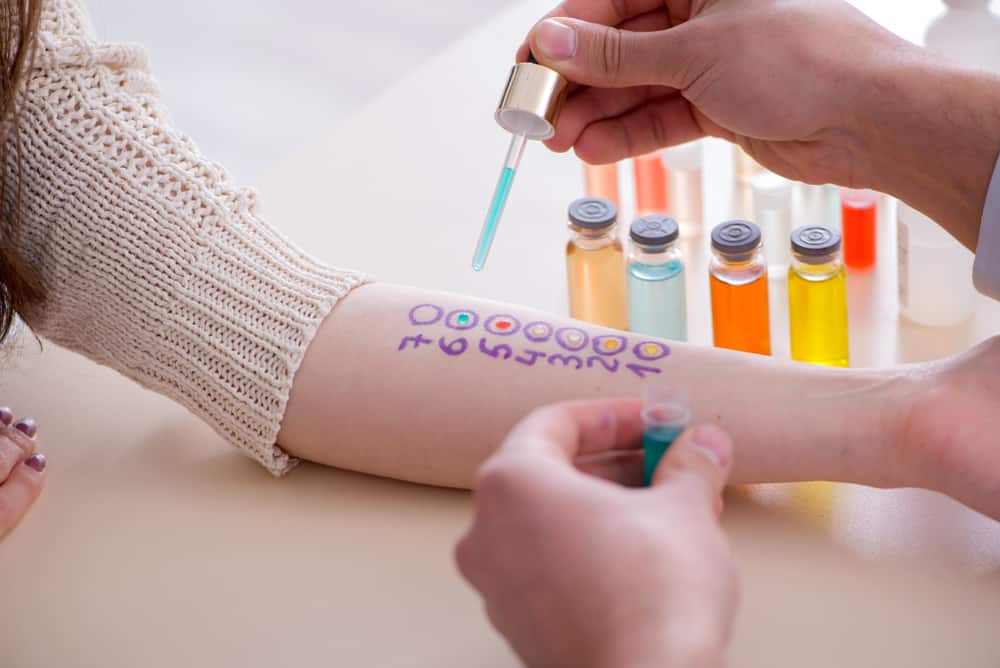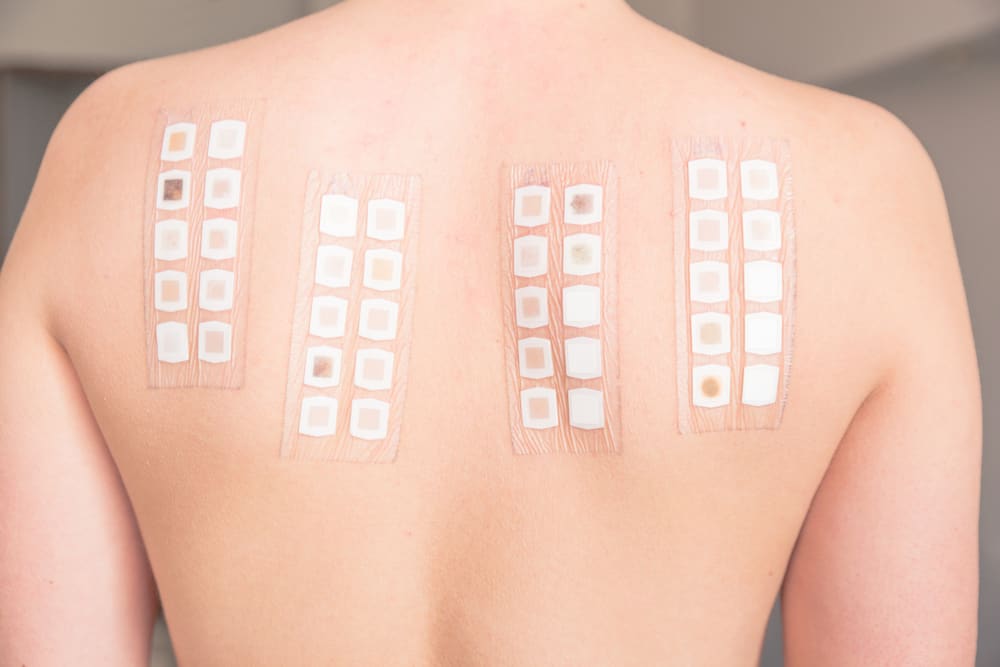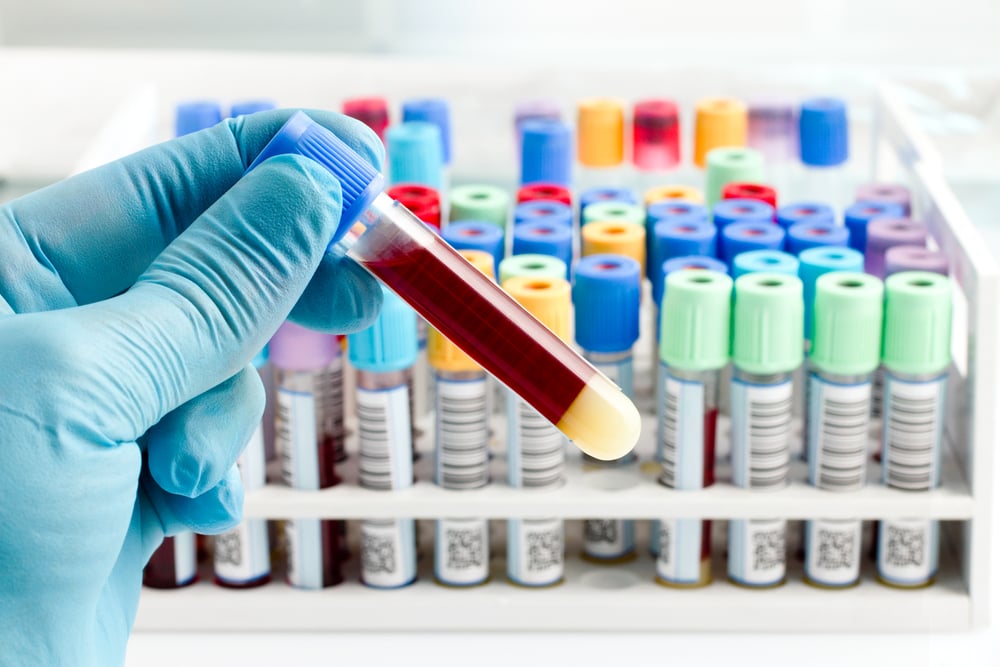Most Common Allergy Tests in Clinics and Hospitals
Allergies occur when the immune system overreacts to foreign substances from the environment. There are many different types of allergies with different triggers. So, if you are worried that you have an allergy to something, the best way to be sure is with an allergy test.
An allergy test is an examination performed by a specialist to diagnose allergies. This test aims to see if your body has an allergic reaction to certain substances. Testing can be done by means of blood tests, skin tests, or food elimination.
Allergy skin test

This examination is performed to diagnose allergies to inhalation or skin exposure, such as allergies to animal hair, dust and mites, or plant pollen. Through a skin test, the doctor can also test for several other allergens (allergens) at once.
The examination process is relatively easy, fast, and has minimal pain. Here are some of the most common types of skin tests that doctors do.
1. Skin prick test (skin prick test)
Skin prick test or skin prick testis a test to detect allergies to multiple allergens at once. The allergens that can be tested with this test include pollen, mold, animal hair, mites, or certain foods.
The allergens used are made from natural ingredients with a very small concentration. The ingredients chosen are the ones that most commonly trigger allergic reactions. In one test, usually more than one allergen is administered and a maximum of 25 allergens.
Here are the steps for how this allergy test is done.
- The nurse will clean the arm with a cleanser containing alcohol and water.
- The arm skin is coded with a skin marker according to the amount of allergen tested. For each mark, the distance must be a minimum of 2 cm.
- The doctor will drop an allergen solution next to the mark on the skin of the arm.
- The doctor will insert a needlesterile onto the skin that has been poured allergens. Needleeach skin prick test should be new.
- The excess allergen solution will be wiped with a tissue.
- About 20 to 30 minutes later, the doctor will observe the reaction on the skin.
Apart from using allergens, the doctor will also test two other substances on skin prick test as follows.
- Histamine. If you don’t react to histamine, skin testing may not determine whether you have an allergy.
- Glycerin or saline. If you have a reaction to glycerin or saline, you may have sensitive skin. The test results need to be diagnosed carefully so as not to be mistaken.
2.Skin patch test (skin patch test)

Test patch is a method of allergy testing by applying an allergen extract to your skin using a patch-like patch. Your skin may be plastered with 20-30 different allergen extracts, including latex, drugs, fragrances, preservatives, hair dyes, metals, and resins.
Before you apply the patch, a nurse will first clean your back with soap and water. Here is a step by step procedure skin patch test.
- After the back is cleaned, the doctor will mark several points on the back with numbers.
- Each number on the back indicates an area for a different allergen.
- Each of these areas will then be affixed with a patch with a different allergen content.
- You can go home and you may feel itching and redness on the skin. This is a normal reaction.
- Even if it itches, don’t remove the patch without your doctor’s permission. The patch should be left on the skin for 48 hours. You will be asked to return to the doctor to have it removed.
- On the second visit, the doctor will shine ultraviolet light on your back. This is done if you are suspected of having a contact allergy caused by light induction (known as Photopatch testing).
In general, it will take you about a week to complete this series of patch tests. The following is an example of an allergy test schedule that will be carried out on each day of arrival.
- First visit (Monday), clean your back and paste patch to be left on for 48 hours.
- Second visit (Wednesday),patch will be released. The doctor then diagnoses your condition according to the reactions that appear on the skin on your back.
- Third visit (Friday), a second reading is taken and the results and reaction reports will be discussed with a dermatologist.
3. The injection test
This test is done by injecting a small dose of an allergen into the skin on your arm. After 15 minutes, the doctor will observe an allergic reaction. This allergy test is generally done for those of you who are suspected of having an insect allergy and allergic to penicillin antibiotics.
Allergy test with blood test

A skin surface test may not be very useful for diagnosis if your allergic reaction is severe. In cases like this, the doctor will need to take a sample of your blood for further examination in the laboratory.
This examination aims to determine the presence or absence of immunoglobulin E antibodies in the body. IgE antibody is a special protein that functions to protect the body when it is entered by germs, foreign substances, or allergens.
If your IgE count is higher than normal, you most likely have an allergy. However, this test cannot show what type of allergy you have. You will need to have specific IgE tests for each allergen.
Allergy test by food elimination

Food elimination is a test that doctors use to diagnose food allergies. This diet has two phases, namely the elimination phase and the reintroduction phase. Before starting the elimination phase, you have to plan the eating patterns to eat and the foods to avoid.
You are advised to consult a doctor or a nutritionist about foods that need to be avoided. In addition, you can also find out for yourself by remembering what foods make your body feel uncomfortable.
After choosing which ones to eliminate, you will need to remove them from your diet for a few weeks. Generally, this phase is carried out for six weeks, but there are also those who do it for two to four weeks.
If this phase goes well and does not produce an allergic reaction, you can move on to the reintroduction phase. In this phase, you will gradually return to eating foods that were previously eliminated. Most of the first foods chosen are those that have the lowest risk of causing symptoms.
If more than one food group has been eliminated, you can add it about three to five days after you return to the first risk food group. Start eating small portions.
For example, the first food consumed after the elimination diet phase is eggs. If during these three days, no symptoms appear, you can continue to start consuming dairy products afterwards.
While you change your diet, your doctor will monitor any allergic symptoms that appear. If you are really allergic to the food that is being avoided, you will likely reduce your symptoms.
Are there any risks from allergy testing?

Allergy test is risky causes mild itching, redness, or swelling of the skin. These symptoms can go away on their own in a matter of hours to a few days. A mild corticosteroid cream can relieve these symptoms.
In rare cases, an allergy test may trigger a reaction that needs to be treated medically. This is why every test must be carried out in a clinic with adequate medication and equipment, including epinephrine injections for emergencies.
One such emergency is anaphylactic shock, which is a severe allergic reaction that can be life-threatening. Signs include difficulty breathing, swelling of the throat, and a sudden drop in blood pressure.
However, allergy testing is a safe procedure as long as it is done under a doctor’s supervision. The benefits also outweigh the risks, because this test helps you identify what allergens in your environment need to be avoided.
Hello Health Group does not provide medical advice, diagnosis or treatment.